Discover comprehensive insights on used excavator prices. Learn key factors affecting costs, market trends, hidden fees, and how to budget effectively for your next purchase.
Key takeaways
- Used excavator prices in Australia in 2025 generally range between $25,000 and $180,000, depending on size, condition, and usage history.
- Mini excavators typically cost $25,000 to $60,000, mid-size excavators fall in the $60,000 to $120,000 range, and larger units can command between $100,000 and $180,000.
- Machine hours, age, condition, service history, and attachments all significantly affect pricing.
- The average resale price for excavators with fewer than 5,000 hours has increased by around 6–8% compared to 2024.
- Infrastructure demand in 2025 has driven second-hand excavator demand up by approximately 17%, contributing to stronger prices.
- Buyers should allocate an additional 10–15% of the purchase price for initial servicing or upgrades.
- Excavator finance options in 2025 typically begin from 7.95% per annum with terms up to five years, making it possible to spread out ownership costs.
- A quality used excavator may deliver 30–50% cost savings over new models, without compromising performance for many general-purpose tasks.
Introduction: Understanding used excavator prices in 2025
Excavators are vital for construction, earthworks, demolition, and infrastructure projects across Australia. For businesses seeking to scale efficiently, purchasing a used excavator is a practical alternative to new equipment, especially when done strategically.
In 2025, several market factors are influencing second-hand equipment prices, from infrastructure demand and supply chain delays to shifting emission compliance rules. This guide breaks down everything you need to know about excavator pricing in Australia today, covering average costs, influencing factors, and tips to help you budget wisely.
What you can expect to pay for a used excavator
Used excavator prices in Australia vary widely based on the machine's size, class and overall condition.
Mini excavators (1 to 5 tonnes)
Entry-level machines designed for tight access and light-duty applications typically cost between $25,000 and $60,000 in 2025. Pricing varies based on engine hours, age, and whether any attachments like buckets or augers are included. Machines under five years old with low hours will sit at the top of this range, while older units with heavy use may be priced at the lower end.
Mid-size excavators (6 to 20 tonnes)
Mid-size machines are suitable for most general construction and civil applications. Expect to pay $60,000 to $120,000, depending on maintenance history, hours, and mechanical condition. Units with service records and fewer than 6,000 hours are generally valued more highly.
Large excavators (21 tonnes and up)
Heavy-duty excavators designed for major earthworks, quarrying, or demolition typically range from $100,000 to $180,000. Prices increase based on undercarriage condition, engine integrity, hydraulic performance, and compliance with current operational standards. Machines under 10 years old and with less than 6,000 hours usually command premium pricing.
What affects the price of a used excavator?
Understanding the key factors that influence pricing can help you assess whether a listing is good value, or overpriced.
Machine hours
Engine hours are one of the most important indicators of wear and future servicing needs. Units with fewer than 5,000 hours generally command stronger resale values. Once machines pass the 10,000-hour mark, a full mechanical assessment is recommended, as major repairs may be imminent.
Age and model year
Newer excavators are generally more expensive due to improved fuel efficiency, emissions compliance, and lower wear. However, older machines that have been well maintained can still be highly reliable, just priced lower to reflect age.
Maintenance and servicing history
A documented service history adds value. It shows the machine has been looked after and may reduce the risk of unexpected breakdowns. Excavators without any servicing documentation are typically harder to sell and attract lower offers.
Attachments and extras
Additional features like quick hitches, tilt buckets, or hydraulic thumbs can increase a machine’s overall value. These extras often cost thousands of dollars when purchased separately, so consider their inclusion when comparing prices.
Undercarriage and hydraulic condition
These are high-cost areas to repair. Worn undercarriage parts or tired hydraulic pumps can add tens of thousands in reconditioning costs. A machine with a clean undercarriage and smooth hydraulic operation will always be valued higher.
Cosmetic condition
While aesthetics don’t directly impact performance, they do influence buyer confidence. Machines with tidy paintwork, clean cabins, and no visible weld repairs or leaks tend to sell faster and for more.
Market trends for used excavators in 2025
Australia’s second-hand machinery market will remain strong in 2025, driven by continued investment in infrastructure and a growing preference for cost-effective, in-use-ready machines.
- Demand for used excavators rose 17% year-on-year, as reported by major equipment auctioneers and dealers across the country.
- Units that are under 10 years old and with fewer than 6,000 hours have experienced a 6–8% average increase in value compared to 2024.
- Low-hour models are commanding premiums, especially in regions experiencing high civil project activity such as Queensland and Western Australia.
- Regional pricing variations are notable: high-demand zones often see elevated pricing, while metropolitan areas may offer more variety and competitive rates.
How to value a used excavator properly
Buying used machinery isn’t just about the sticker price. It’s about long-term value, hidden costs, and potential for productivity. Here’s how to assess price accurately:
Conduct a market-wide price comparison
Search across several marketplaces, listings, and dealer sites to get a sense of pricing for similar models and configurations. Focus on machines that closely match in age, hours, and features, not just price.
Schedule a pre-purchase inspection
A professional inspection or cold start test can uncover issues with hydraulics, engine performance, and control systems. Always inspect in person or via video if possible before transferring funds.
Account for GST and additional costs
Be aware that some advertised prices may not include GST. Also factor in transportation costs, compliance upgrades, and the expense of any missing attachments or accessories.
Budget for repairs and servicing
Even the best-maintained machines may require servicing after purchase. Set aside an extra 10–15% of the purchase price for immediate consumables like oils, filters, seals, hoses, and minor repairs.
How finance affects your price planning
Spreading the cost of a used excavator over time can improve cash flow and allow for more flexible budgeting.
In 2025, business buyers in Australia can access used excavator finance with rates starting around 7.95% per annum, depending on the age of the machine, credit profile, and term length. Terms typically range from one to five years. Loan options include fixed-rate finance contracts with ownership at the end, or leasing structures designed for off-balance-sheet acquisition.
Pre-approval is often recommended before bidding at auctions or negotiating with private sellers. It helps define your budget and positions you to act quickly in a competitive market.
Looking to finance a used excavator? EasyAsset can help you compare finance options from multiple lenders and guide you through pre-approval, all in one place. It’s obligation-free and tailored for Australian businesses.
Hidden costs buyers often overlook
The purchase price of a used excavator is only part of the total cost. Many buyers underestimate the additional expenses required to get the machine operational, compliant, and productive. Here's what to account for:
Transport
Delivery costs can range from $1,500 to $8,000, depending on distance and machine size. Clarify whether delivery is included, and get multiple quotes if arranging it yourself.
Immediate servicing
Expect to spend 10–15% of the purchase price on post-sale maintenance, typically fluids, filters, wear parts, and minor adjustments, even if the machine appears in good condition.
Missing attachments
Buckets, hitches, and other attachments are often sold separately. Replacing these can add $3,000 to $15,000, depending on what’s missing and required for your work.
Compliance upgrades
Older machines may need updates to meet current safety or emissions standards, including:
- ROPS/FOPS certification
- Reversing alarms or lighting
- Lockout switches and signage
These can add several thousand dollars depending on site requirements.
Finance and insurance
Factor in finance setup fees, monthly repayments, and annual insurance costs, which typically range from $1,200 to $3,500, depending on use and location.
Downtime risks
Machines needing repairs or certification can delay project start dates. Consider the indirect cost of lost productivity while waiting for parts, transport, or compliance checks.
Frequently asked questions (FAQs)
What is considered a good number of hours for a used excavator?
Ideally, machines with fewer than 5,000 hours are considered low-use and will typically offer the best value and longevity. That said, well-maintained units with up to 10,000 hours may still deliver strong performance if servicing has been consistent.
Should I buy from an auction, a dealer, or a private seller?
Each option has pros and cons. Auctions may offer lower upfront pricing but limited buyer protections. Dealers generally offer added peace of mind with inspections and short-term warranties, though at higher prices. Private sellers may offer competitive deals but often require more due diligence.
Are there seasonal price fluctuations?
Yes. Excavator listings often increase in late summer and early winter, especially when businesses offload unused stock before the end of the financial year or after large projects. These periods may offer better stock availability and bargaining opportunities.
How do I avoid overpaying for a used excavator?
Always compare listings by year, hours, and condition, not just price. Arrange an independent inspection, request maintenance records, and factor in future costs like transport, attachments, and repairs.
Can I claim tax deductions on used excavator purchases?
Yes. Depending on your business structure and tax eligibility, used equipment may qualify for immediate asset write-offs or depreciation claims. Consult your accountant or tax advisor for specifics related to your situation.
Final thoughts: Know what you're paying for
Buying a used excavator in Australia in 2025 can be a highly economical decision, but only when the price aligns with the true value of the machine. By understanding the current market ranges, inspecting for key condition factors, and planning your budget to include finance and servicing, you’ll avoid common traps and secure a machine that delivers both performance and return on investment.
The key is to look beyond the sticker price. Know what affects the cost, what to expect in today’s market, and how to negotiate with confidence. The right preparation can turn a used excavator from a risk into a long-term asset. If you're also weighing up your finance options, take the next step with our detailed guide on used excavator finance in Australia, which covers loan types, repayments, and approval tips.
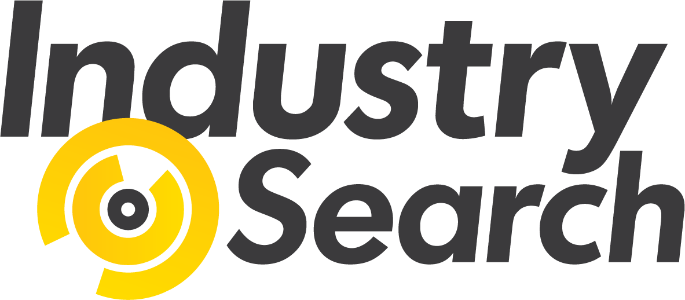

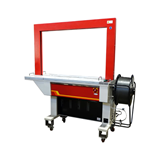
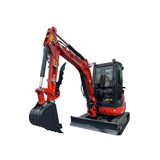
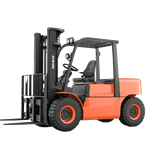
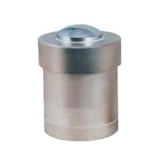

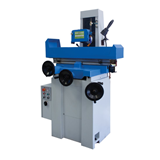
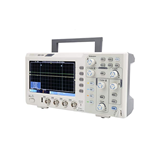






-160x160-state_article-rel-cat.png)
